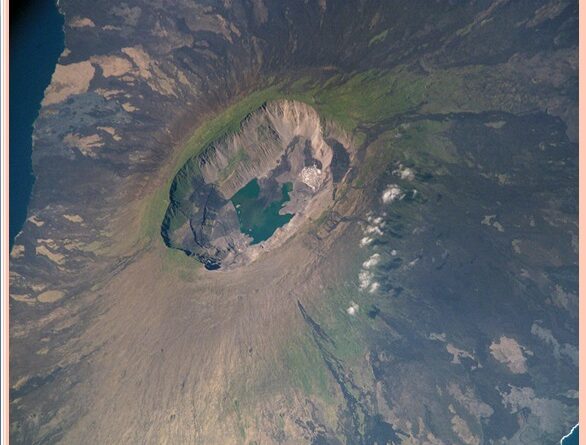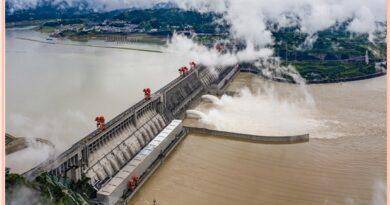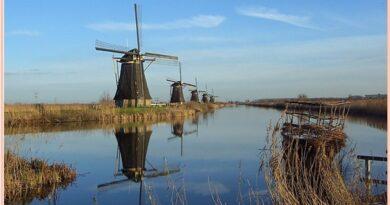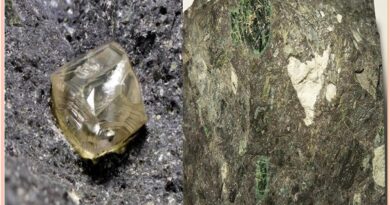Caldera- An Introduction
What is caldera
A Caldera is sub-circular, polygonal, or elongate subsidence basins formed by the eruption of magma from subvolcanic reservoirs. During a volcanic eruption, magma underneath the volcano is expelled, often forcefully. When the magma chamber empties, the support that the magma had provided inside the chamber is lost and as a result, the sides and top of the volcano collapse inward. Calderas vary in size from one to 100 kilometers in diameter.
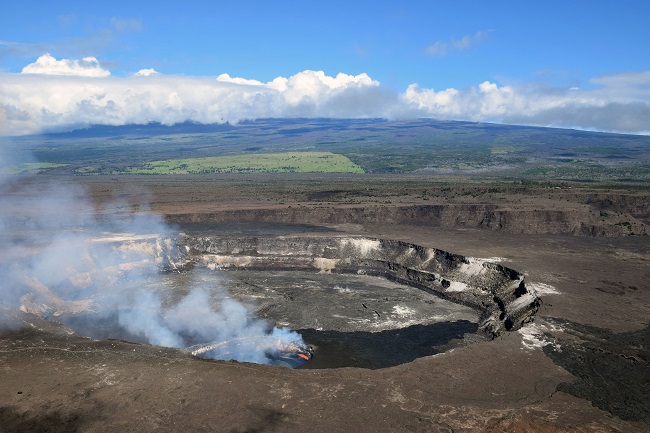
Crater volcano forms a lake as the bowl-shaped depression fills with water. A famous example is Crater Lake, in Oregon. This caldera formed nearly 7,000 years ago when a stratovolcano, Mt. Mazama, violently erupted. After thousands of years, many smaller volcanic eruptions continued inside the caldera. With a depth of 594 meters, Crater Lake is the deepest lake in the United States and the ninth-deepest lake in the world.
Crater Lake and Yellowstone caldera (Yellowstone national park) result from dramatic eruptions, but slower eruptions can also create calderas. The slower eruption often occurs with shield volcanoes, which are typically flat and more gradually sloped. Lava flows from shield volcanoes is often occurs at regular intervals and Over time, this creates a series of depressions.
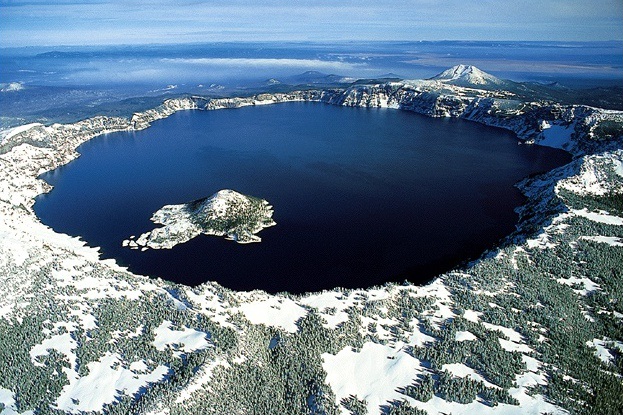
These volcanic craters are very common on Hawaiian shield volcanoes. Their topographic rims crown the summits of the active Kīlauea and Mauna Loa volcanoes. Erosion has exposed the shallow or mid-depth reaches of calderas at older volcanoes such as Kaho‘olawe, West Maui, and East Moloka‘i.
Type of Caldera
Calderas or volcanic craters that form by two different methods:
1) an explosive volcanic eruption; or,
2) collapse of surface rock into an empty magma chamber.
Explosive Calderas
Explosive caldera eruptions are produced by a magma chamber whose magma is rich in silica. Silica-rich magma has a high viscosity that enables them to hold gas bubbles under very high pressures. When abundant gas moves upwards from inside depth, the reduction of pressure causes the gases to expand.
Also read- Depositional landform- “The Point Bar”
When an eruption occurs the result can be an enormous explosion that blasts away large volumes of rock to form the caldera. Some of these blasts eject many cubic kilometers of magma and rock.
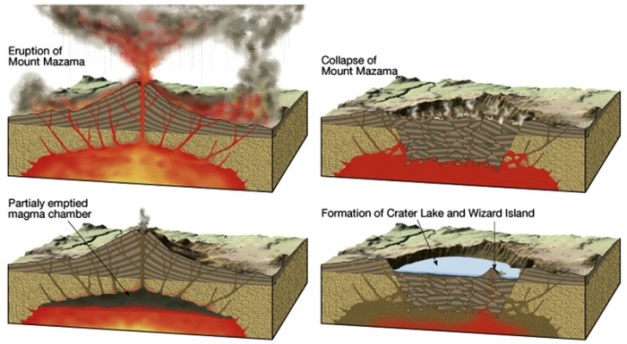
Collapse Caldera
Collapse calderas form when a large magma chamber is erupted by a volcanic eruption or by subsurface magma movement. The unsupported rock that forms the roof of the magma chamber collapses to form a large crater. Crater Lake and some other calderas are thought to have formed by this process.
Yellowstone Caldera eruption
Yellowstone National Park is world-famous for its geysers and hot springs. These magma system has produced some of the largest volcanic eruptions in Earth’s history eruptions so large that they have been known as “supervolcanoes.” One of these eruptions produced a Volcanic crater of about 80 km. across that underlies most of Yellowstone National Park. Yellowstone Caldera map showing the spectacular scenery around the national park.
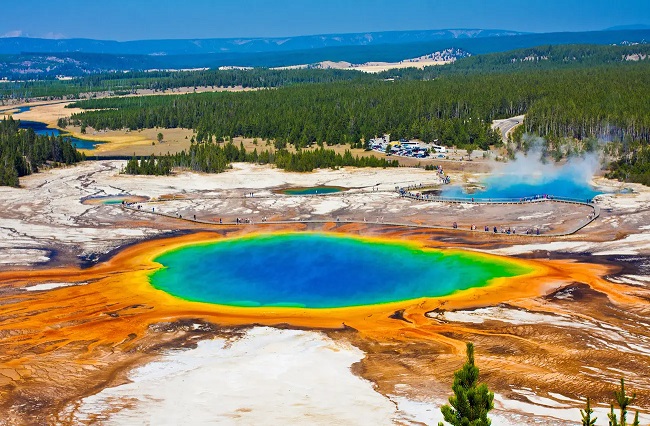
The Toba Supervolcano
The eruption of Toba on the island of Sumatra, Indonesia occurs around 73,000 years ago. It is the largest explosive eruption on Earth in at least the past 25 million years.
The Toba eruption is believed to have deforested much of central India – about 3000 miles from the eruption site. The blast is thought to have ejected about 800 cubic kilometers of ash into the atmosphere, producing a crater that is 100 kilometers long and 35 kilometers wide. The crater is now the site of the world’s largest volcanic lake. The largest known young (Quaternary) volcanic crater Toba was not recognized as a caldera until satellite imagery was available.
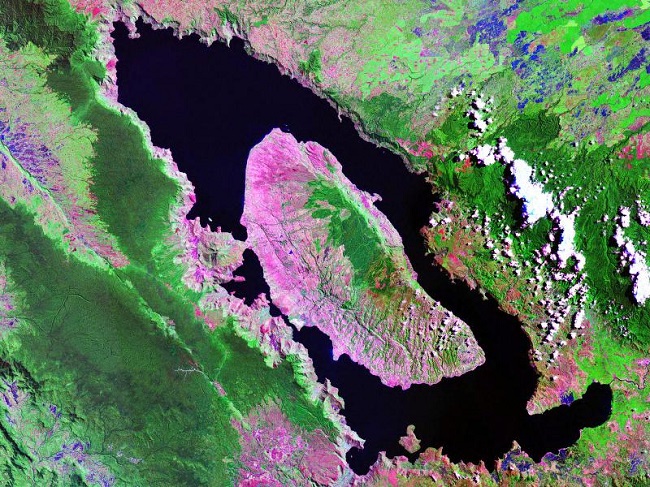
Valles Caldera
Valles Caldera or Jemez volcanic crater is a 22.0 km wide volcanic caldera in the Jemez Mountains of New Mexico. Valles landscapes have Hot springs, streams, fumaroles, natural gas seeps, and volcanic domes. The highest point in the caldera is Redondo Peak, a 3,430 m resurgent lava dome located entirely within the crater.
Long Valley caldera
Long Valley caldera is a 16 x 32 km diameter caldera located east of the central Sierra Nevada Range. It is formed as a result of the voluminous Bishop Tuff eruption (super volcano eruption) about 760,000 years ago.
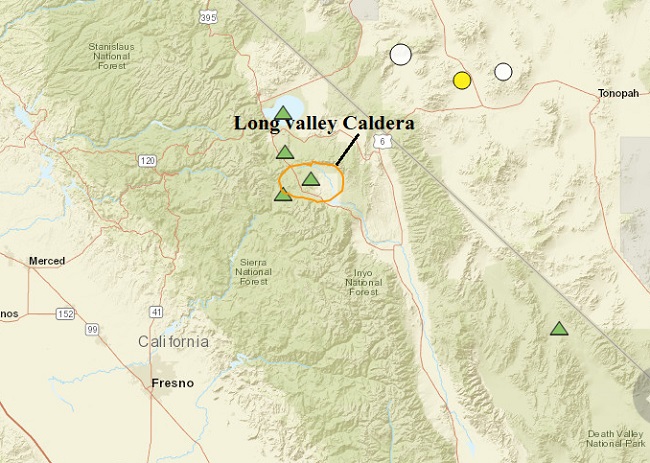
Santorini caldera
Santorini volcanic crater is a large and mostly submerged caldera, located 120 kilometers north of Crete in Greece. Santorini island group, consisting of Santorini, the main island, Therasia and Aspronisi at the periphery, and the Kameni islands at the center.
